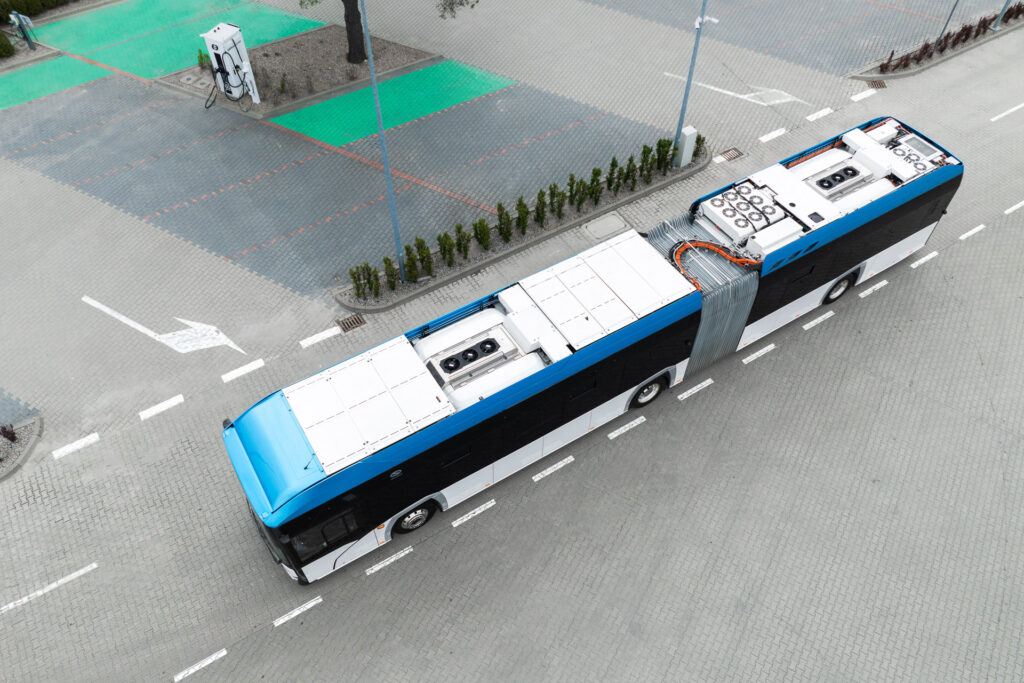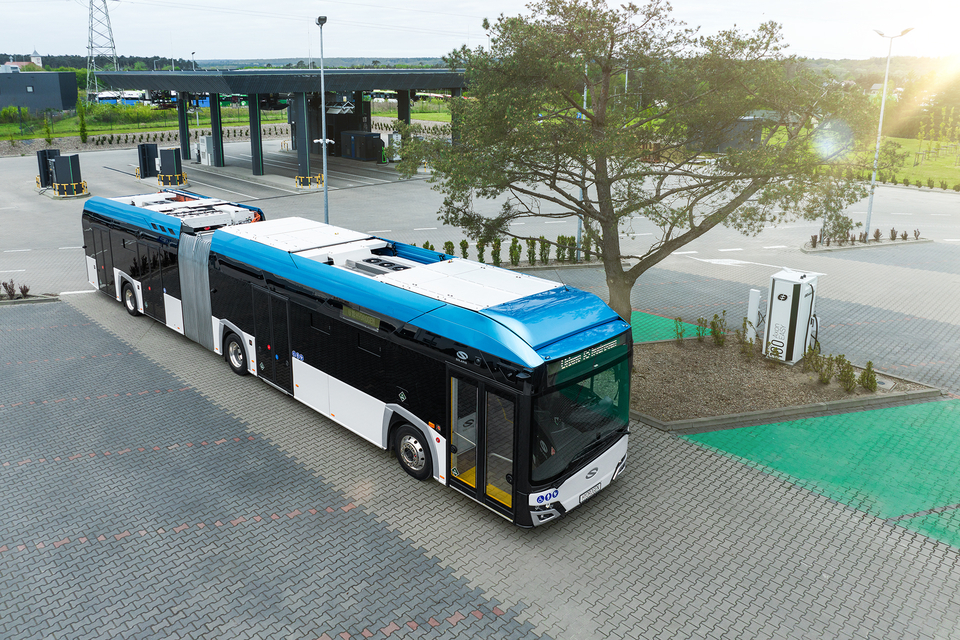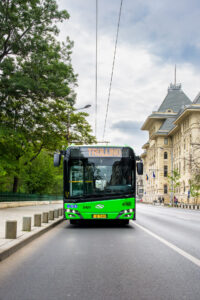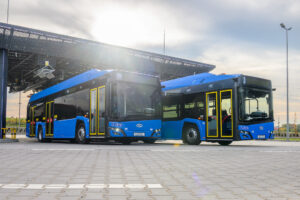NMC, LFP and LTO are the designations for the types of lithium-ion batteries that identify the chemical elements used in them. The differences in the so-called battery chemistry (i.e. the set of chemical compounds they contain) mean that the properties of the cells can be tailored to the target application – in buses and cars, among others. How do the different battery types affect vehicle capabilities?
Batteries are characterised by a number of technical parameters that determine under which conditions they will be used optimally. These include energy density, which has a direct impact on battery capacity and thus vehicle range, and power density, which determines how much power – and consequently how fast – the cells can be charged. Also of key importance is the number of charging cycles the batteries can go through before they need to be replaced. Different battery types offer different combinations of these parameters. In the case of buses, this means that vehicles can be selected for variables such as specific routes, available charging infrastructure at depots or geographical conditions.
LTO batteries
LTO batteries are based on the anode containing titanium oxides. Hence their designation – Lithium-Titanium-Oxide. They provide a high power density, which allows them to be recharged within minutes between courses. Although, due to their lower energy density, their capacity expressed in kilowatt-hours (kWh) is not as impressive as that of other cell types, it does not take long to recharge the vehicle and lasts much less than a few hours and is calculated rather in minutes. This is an excellent solution for heavy urban traffic, when the bus battery is not sufficient for a full day’s use. LTO batteries also have a very long life in terms of charge cycles.
LFP batteries
LFP batteries use lithium-iron-phosphate cells, or Lithium FerroPhosphate. They offer higher energy density and a higher nominal voltage than LTO batteries. LFP batteries represent a good compromise between energy density, power density and lifetime. By not using elements such as cobalt or nickel to build the cells, LFP batteries are able to be more competitively priced.
NMC batteries
NMC batteries, or lithium-nickel-manganese-cobalt (Nickel, Manganese, Cobalt) batteries, are one of the most common battery types. They offer very high energy density and can be charged at relatively high power. There is ongoing research and development to increase the service life of these types of cells, but they already provide many years of intensive use. NMC batteries are a good solution for carriers that care about high vehicle range on a single charge.
Regardless of the battery chemistry chosen, all the solutions presented are mature technologies that guarantee safe and environmentally friendly transport for passengers worldwide. Such diversity means that any carrier – regardless of fleet size or geography – can find batteries that meet their needs and are ideal for any city.
- When it comes to electric buses, what is the battery made of? You will find HERE
- How to choose the best batteries for your fleet? Check HERE




